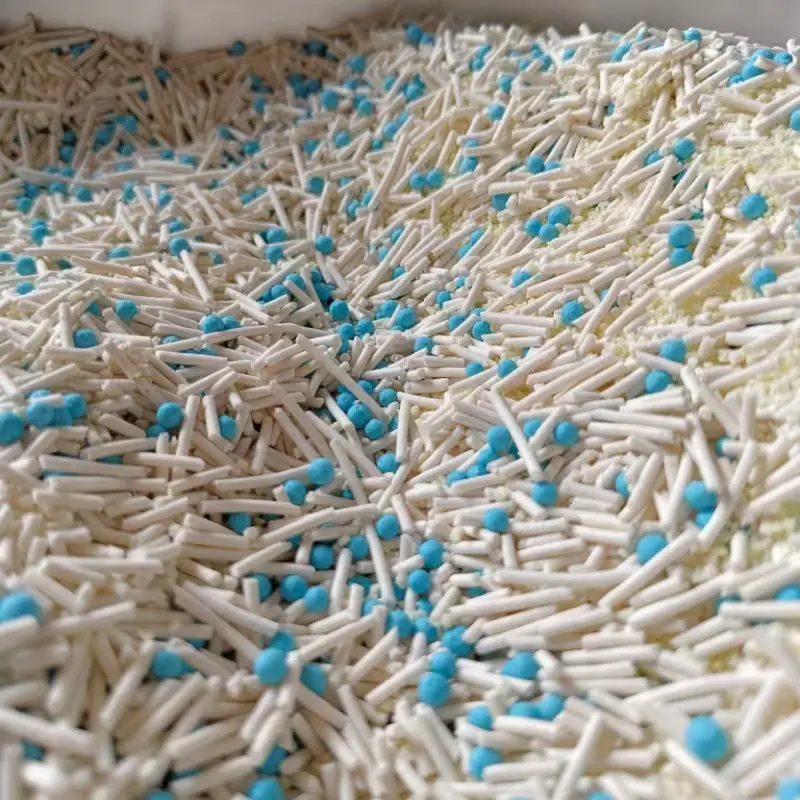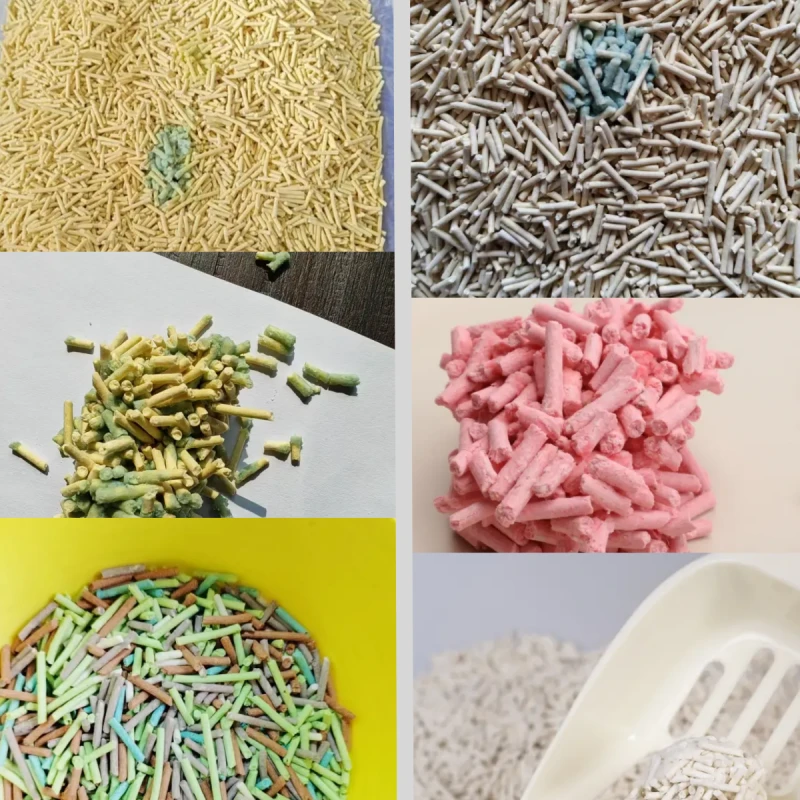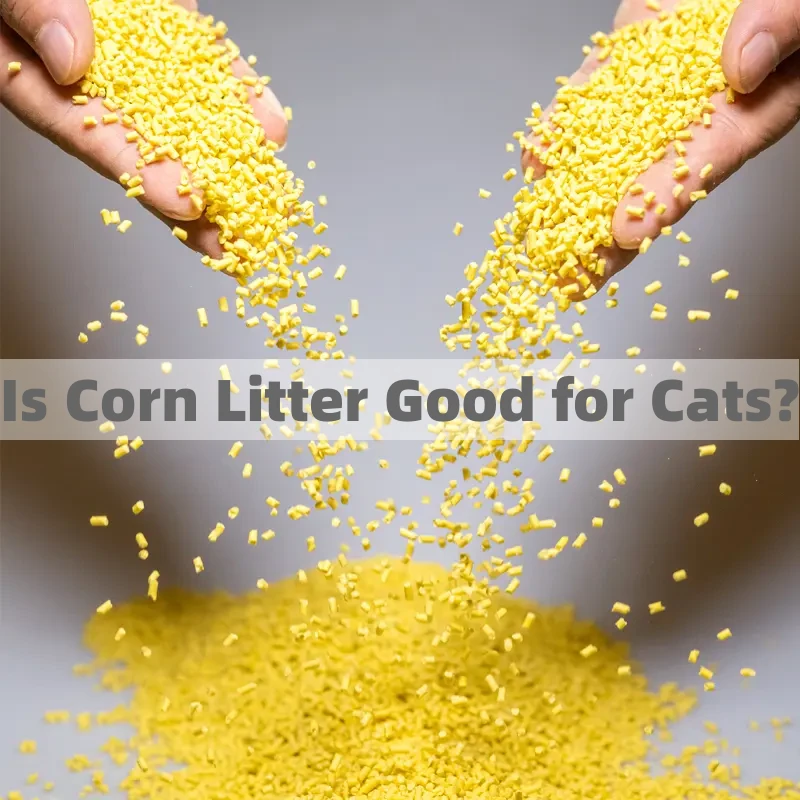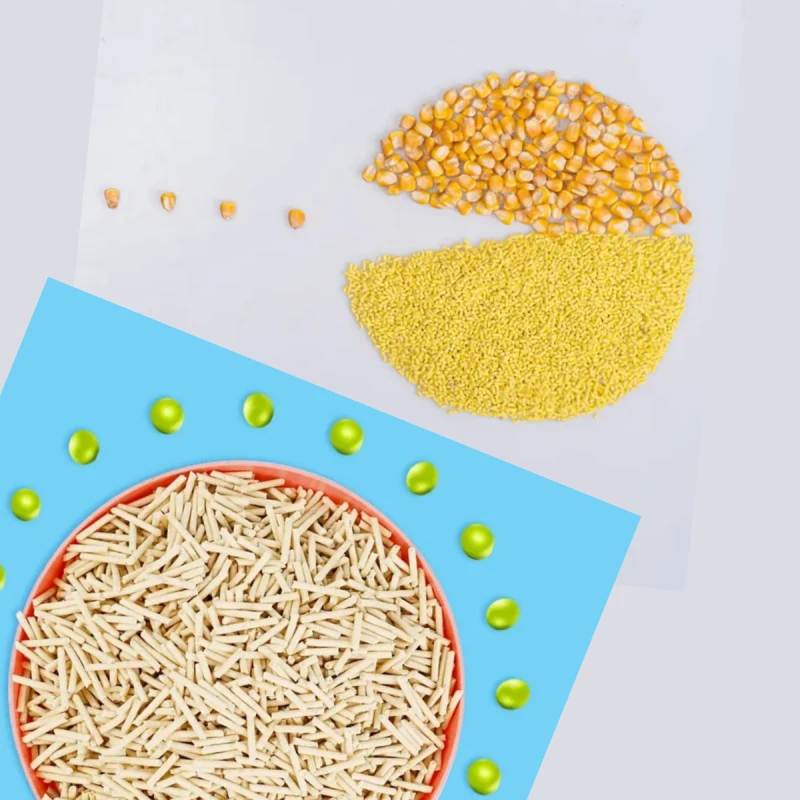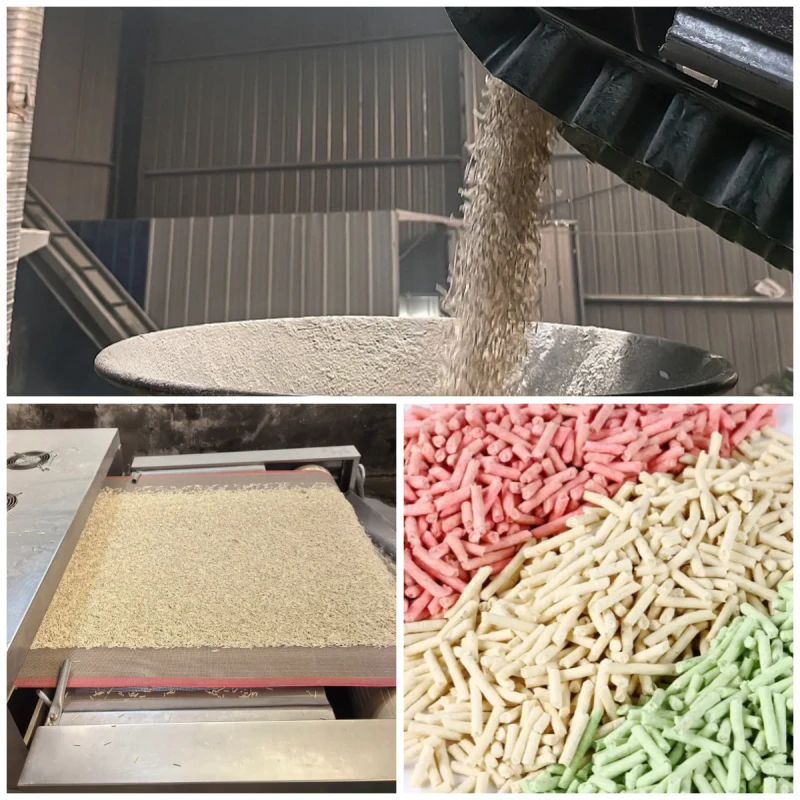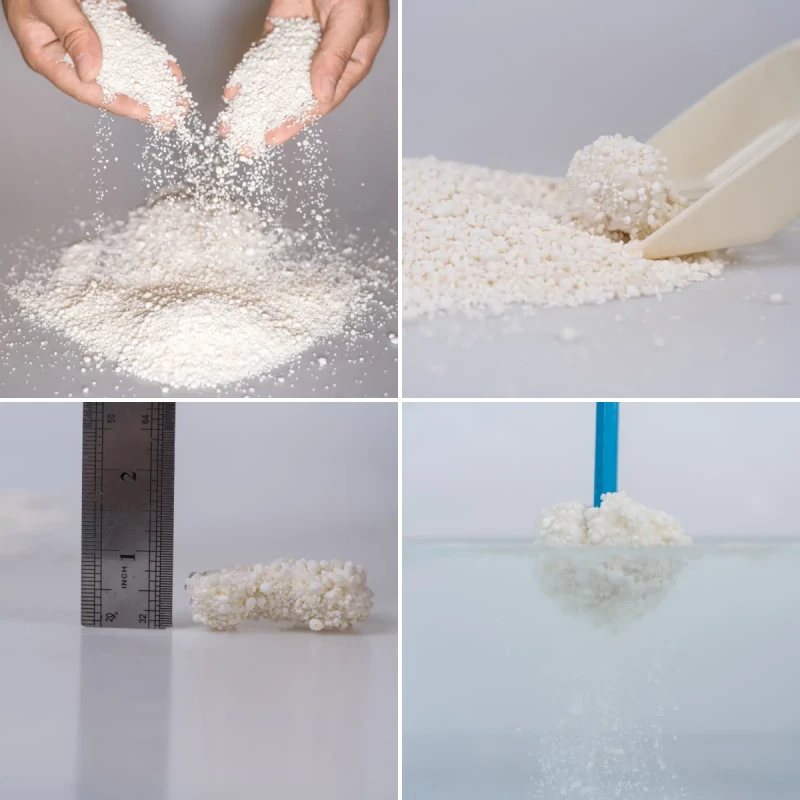What is Bentonite Cat Litter?
Bentonite cat litter is a type of clumping cat litter made from natural bentonite clay. Bentonite has unique properties that allow it to absorb liquid rapidly and form clumps, making it easy for pet owners to scoop out waste and keep the litter box clean. In addition to clumping, bentonite provides good odor control, making it a popular choice among cat owners.
There are two main types of bentonite clay:
Sodium Bentonite: Known for its excellent swelling and clumping properties, which allow it to form solid clumps.
Calcium Bentonite: Less clumping capability but offers good absorbency, sometimes used in non-clumping varieties.
313715.webp)
Specifications Table for Bentonite Cat Litter
| Feature | Details |
|---|---|
| Material | Bentonite clay (Sodium Bentonite or Calcium Bentonite) |
| Clumping Ability | High (forms firm clumps for easy scooping) |
| Absorbency | 200% - 300% of its weight |
| Odor Control | Moderate to High |
| Particle Size | Fine (0.5-2 mm), Medium (2-5 mm), Coarse (5-10 mm) |
| Dust Content | Low-dust formulations available, less than 1% |
| pH Level | Neutral (7) |
| Color | Typically gray or off-white |
| Usage | Suitable for cats and other small pets |
| Eco-Friendliness | Natural and biodegradable, though mining impacts environment |
| Packaging | 5kg, 10kg, 20kg bags for commercial sale |
Formula for Bentonite Cat Litter
To produce bentonite cat litter with optimal properties, the following ingredients and ratios are commonly used:
Bentonite Clay (Sodium Bentonite): 95% - 98%
Odor Control Additives (Optional): 1% - 3% (e.g., activated carbon, baking soda)
Fragrance (Optional): Less than 1% (e.g., lavender or pine scent, to enhance odor control)
Binder (if needed): 1% - 2% (though bentonite naturally clumps, some manufacturers may add a small amount of natural starch as a binder)
Note: The exact formulation may vary based on the specific brand and product features, such as dust control, clumping strength, and added fragrances.
Make Bentonite Cat Litter: A Detailed Step-by-Step Manufacturing Process
Step 1: Mining the Bentonite Clay
The process begins with the extraction of bentonite clay from mines. Bentonite is a type of clay that contains a high amount of montmorillonite, a mineral that gives it its unique absorbent and swelling properties. There are two types of bentonite clay used in cat litter production:
Sodium Bentonite: Known for its high swelling and clumping properties.
Calcium Bentonite: Less swelling ability but still highly absorbent.
Once the clay is mined, it is transported to the processing facility.
Step 2: Crushing and Grinding the Clay
The raw bentonite clay is brought to the processing plant where it is crushed into smaller particles. Crushing breaks down large chunks of clay into smaller pieces, which makes it easier to grind further. After the initial crushing process, the clay is ground into a fine powder.
The size of the particles can vary depending on the type of cat litter being produced:
Fine Granules: For low-dust, soft-textured litter.
Medium Granules: Standard particle size for clumping litter.
Coarse Granules: For larger particle, low-tracking litter.
Step 3: Drying the Bentonite Clay
After crushing and grinding, the bentonite clay is dried to remove any moisture content. This step is crucial because the clay needs to be completely dry to enhance its absorbency and clumping abilities. The drying process is typically done in large industrial dryers at high temperatures, ensuring that the moisture content is reduced to less than 10%.
A well-dried clay will absorb moisture more effectively, which is essential for forming strong clumps when used in the litter box.
Step 4: Screening and Particle Sizing
Once the clay has been dried, it undergoes a screening process to separate particles according to size. Different cat litter products require different particle sizes, so the clay is screened through a series of mesh screens. The goal is to create uniform particle sizes that will be consistent in the final product.
Fine Particles: Used in low-dust or dust-free cat litter formulations.
Medium Particles: Common for standard clumping litter.
Large Particles: Sometimes used for low-tracking or multi-cat formulations.
The screened particles are sorted and stored according to size for the next steps.
Step 5: Blending with Additives (Optional)
To enhance the performance of the bentonite cat litter, additives may be mixed with the clay. This step is optional, and the additives used depend on the desired features of the final product:
Odor Control Additives: Activated carbon or baking soda may be added to improve odor control.
Fragrance: Light fragrances, such as lavender or pine, can be added to mask unpleasant odors.
Anti-Dust Agents: Certain dust-reducing agents are added to create a low-dust product.
Binders (if necessary): A small amount of natural starch can be added as a binder to improve clumping performance, though bentonite generally clumps well on its own.
The clay and additives are thoroughly mixed in large industrial mixers to ensure even distribution.
Step 6: Secondary Screening and Dust Control
After blending, the mixture is screened once more to remove excess dust particles. This is a crucial step, as dust can be a problem for both cats and their owners. Low-dust or dust-free formulations are especially popular and require this additional screening step.
Advanced dust-extraction equipment is used to capture fine dust particles. The dust-free clay particles are then sent for final inspection to ensure they meet the desired quality standards.
Step 7: Quality Control Testing
Before packaging, the bentonite cat litter undergoes rigorous quality control testing. This step is important to ensure that the final product meets the required standards for clumping, absorbency, odor control, and dust levels. Testing typically involves:
Clumping Strength: Ensuring the litter forms solid clumps that are easy to scoop.
Absorbency: Measuring how much liquid the litter can absorb, which is typically 2-3 times its weight.
Odor Control Efficiency: Testing the litter’s ability to neutralize and control odors.
Dust Content: Ensuring dust levels are minimal, especially in low-dust or dust-free products.
Products that don’t meet quality standards are either reprocessed or discarded, ensuring only high-quality litter reaches the market.
Step 8: Packaging the Bentonite Cat Litter
Once the product has passed quality control, it’s ready for packaging. The litter is packed into bags of various sizes, typically 5kg, 10kg, and 20kg, depending on market requirements. Packaging materials are chosen to be moisture-proof to ensure the litter remains dry and clumpable during storage and transport.
Some manufacturers may also add resealable features to packaging for convenience. Bulk packaging options are also available for large-scale distribution.
Step 9: Storage and Distribution
After packaging, the cat litter bags are stored in a warehouse until they are ready for distribution. The warehouse must be kept dry to prevent moisture from affecting the litter’s clumping ability. The product is then shipped to retailers or customers, where it’s ready for purchase.
422645.webp)
Summary of Manufacturing Process
Mining the Clay: Extracting natural sodium or calcium bentonite clay.
Crushing and Grinding: Breaking down the clay into smaller particles.
Drying: Removing moisture to improve absorbency and clumping.
Screening and Particle Sizing: Sorting particles based on size requirements.
Blending with Additives (Optional): Adding odor control agents, fragrance, and anti-dust agents.
Secondary Screening and Dust Control: Reducing dust for low-dust formulations.
Quality Control Testing: Checking clumping, absorbency, and odor control.
Packaging: Bagging the finished product in various sizes.
Storage and Distribution: Storing in a dry warehouse and shipping to retailers.
Final Thoughts
Making bentonite cat litter is a detailed process that requires careful control over each step to ensure high quality. From mining and drying the clay to adding odor control additives and reducing dust, every stage plays a role in creating an effective cat litter that is safe and convenient for cats and their owners.
Bentonite cat litter is known for its excellent clumping ability, making it a top choice for pet owners worldwide. By understanding the manufacturing process, you can appreciate the effort that goes into producing a high-quality product that keeps litter boxes clean, controls odors, and is easy to use.
Advantages of Bentonite Cat Litter
High Clumping Ability: Bentonite’s natural clumping properties make it easy to scoop and dispose of waste, maintaining a cleaner litter box.
Good Odor Control: The clay traps moisture and odors effectively, especially when combined with activated carbon or fragrance.
Economical: Bentonite cat litter is generally affordable and widely available.
Natural Material: Made from clay, bentonite is a natural and biodegradable material.
Disadvantages of Bentonite Cat Litter
Dust Generation: Although low-dust formulas are available, some bentonite cat litters can produce dust, which may be irritating for cats and owners.
Environmental Impact: Mining bentonite clay can have a negative impact on the environment, and bentonite is not renewable.
Non-Flushable: Bentonite litter should not be flushed, as it can cause plumbing issues.
Tips for Choosing Bentonite Cat Litter
Look for Low-Dust Options: If your cat or household is sensitive to dust, select a low-dust or dust-free formula.
Odor Control: Opt for a litter with activated carbon or fragrance if odor control is a priority.
Particle Size: Finer particles provide softer texture and are generally better for clumping, but larger particles may track less outside the litter box.
Packaging: Choose a size that suits your needs and storage space, as larger bags are more economical but can be heavy to handle.
Conclusion
Bentonite cat litter is an effective, natural, and affordable choice for cat owners who want easy clumping and good odor control. Understanding the specifications, formulation, and manufacturing process can help you appreciate what goes into creating this popular cat litter. When selecting bentonite cat litter, consider factors like dust control, odor control, and particle size to find a product that suits both you and your pet’s needs.
Whether you’re a consumer looking for the best option or a business considering producing or selling bentonite cat litter, this guide should provide you with useful insights into the world of bentonite cat litter manufacturing.
Bentonite Cat Litter by Shandong Gelin Town Pet Products Co., Ltd.
Founded in 2020, Shandong Gelin Town Pet Products Co., Ltd. is a leading manufacturer specializing in bentonite cat litter, committed to enhancing the quality of life for cats and their owners worldwide. With a state-of-the-art production facility spanning 16,000 square meters and an annual capacity of 7,000 tons, we leverage advanced technology and meticulous quality control to deliver premium cat litter solutions.
Product Customization
As a professional bentonite cat litter manufacturer, we offer OEM/ODM services tailored to meet diverse market demands. Whether you require unique fragrances, specific granule sizes, or private-label branding, we provide customized solutions to support your business. Our flexible options include:
Natural and scented varieties
Customized packaging designs
Health-monitoring features
Testing and certification support
Global Reach and Certification
Our bentonite cat litter has gained widespread recognition across Europe, America, Australia, and Asia, trusted by pet care businesses and individual consumers alike. We hold certifications including BSCI, ISO9001, SGS, and CTI, reflecting our commitment to quality, safety, and environmental responsibility.
Partnership Opportunities
Whether you are an e-commerce retailer, distributor, or private-label brand owner, Shandong Gelin Town Pet Products Co., Ltd. is your trusted partner for high-quality bentonite cat litter. We provide scalable, reliable, and customized solutions to meet your specific market needs.
Let’s work together to bring premium bentonite cat litter to customers around the globe. Contact us today to learn more about our products and services!
544.webp)
127192.webp)
387.webp)
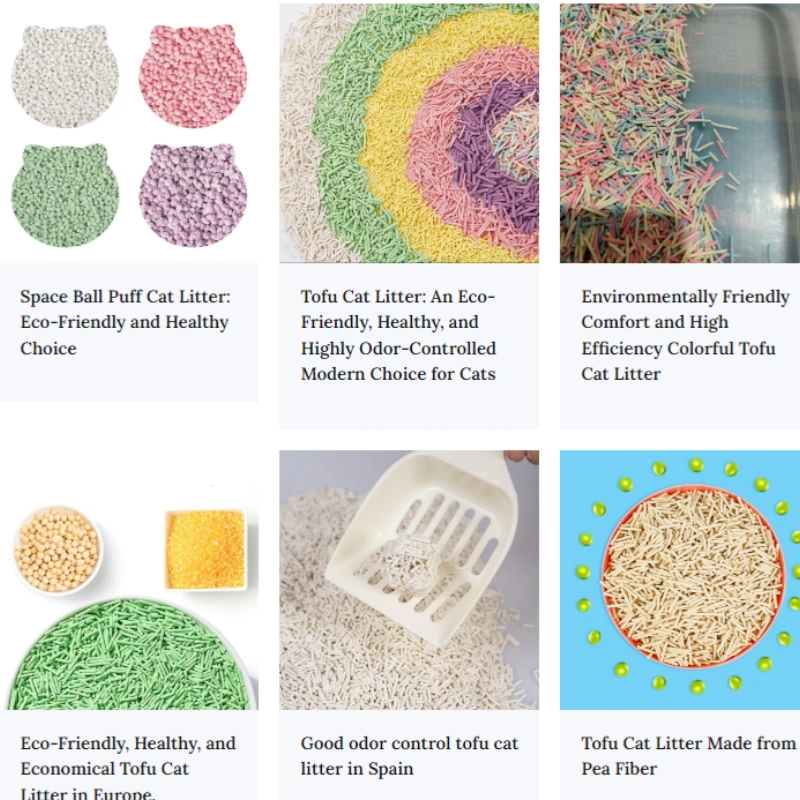
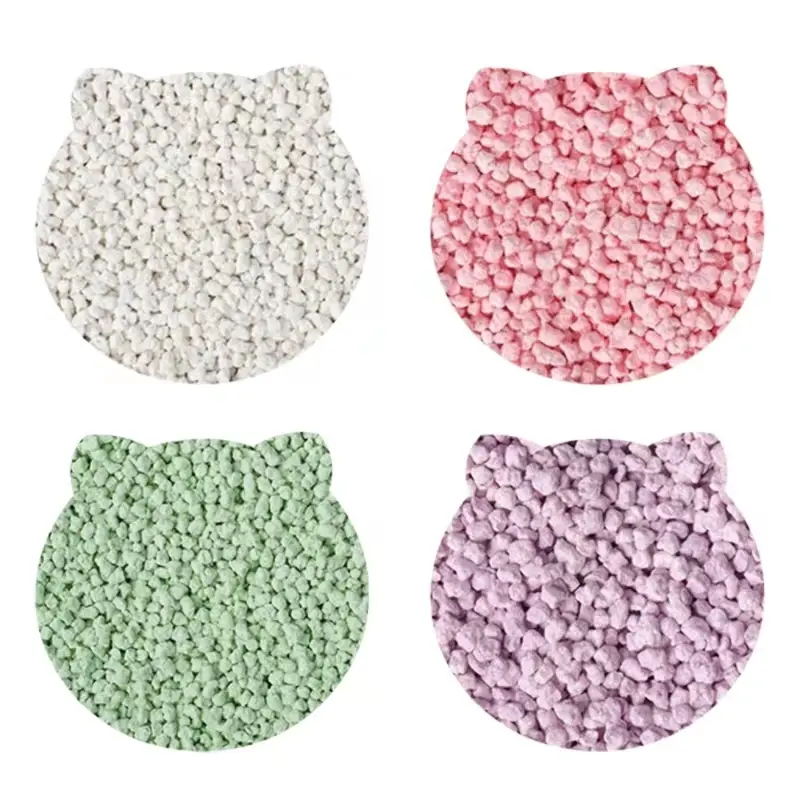
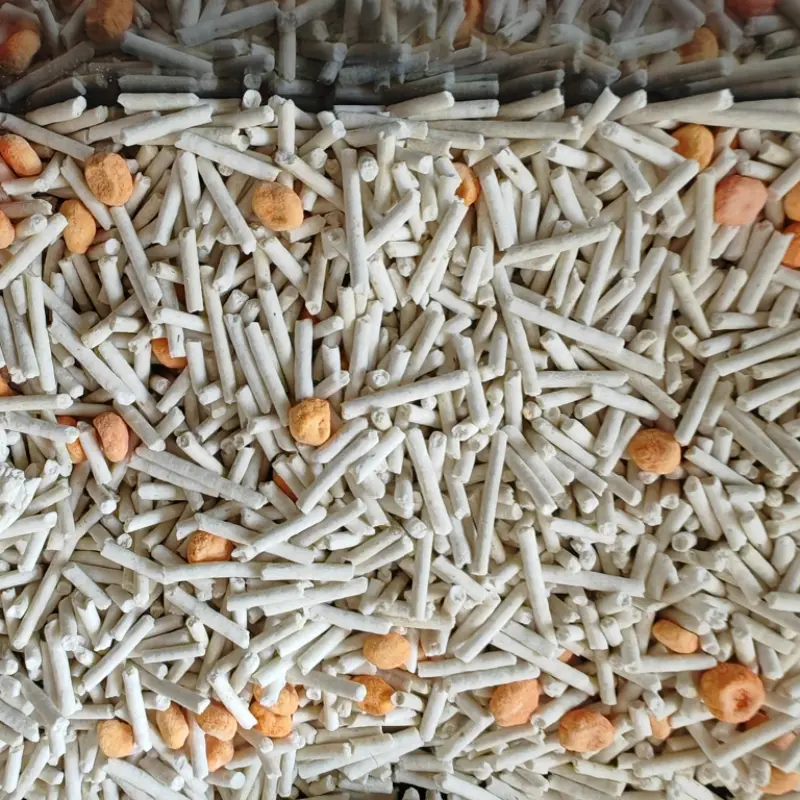
122.webp)
